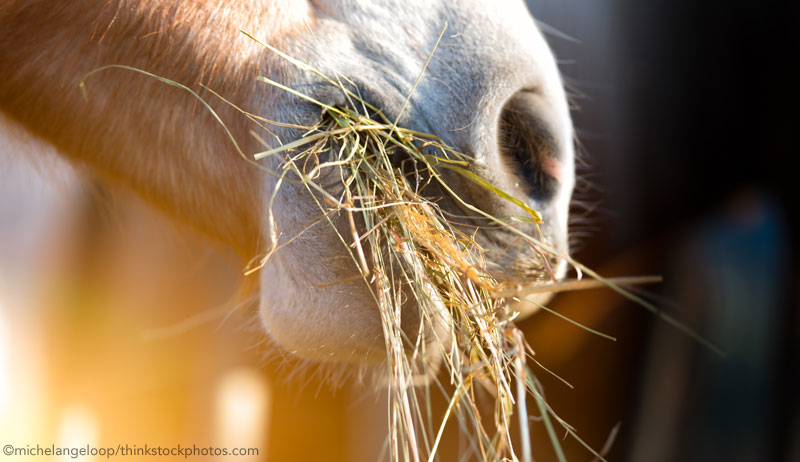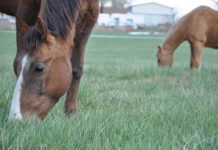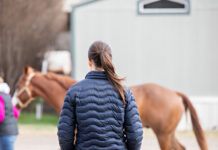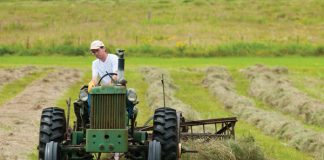All across the country, grass is on the move—upwards! These are the weeks and months of hay production, and as the grass grows taller and taller, we horse owners get closer and closer to the time when we need to store up hay for another year.

But no matter what variety of hay you choose, there are some general key points that high-quality hay should exhibit. Some things to consider include:
- Smell. Good hay smells good. Fresh, clean, and sweet. As hay ages, the odors become less intense, but good-quality hay—no matter what the age—shouldn’t smell moldy or foul in any way.
- Mold or mildew. Does the hay have white or black patches? Or whitish/yellowish patches? Are the patches dusty? If so, this hay was either baled wet or was exposed to dampness at some point after baling and has molded. Another indication of mold is if the hay that seems to be matted together and doesn’t tear apart easily.
- Dust. Even if hay isn’t mildewed or moldy, it can still just be plain old dusty. This can happen for a number of reasons; it might’ve been rained on prior to baling, or it could even have been over dried. While not as critical a problem as mold, dusty hay may still cause respiratory problems for your horse.
- Color. High-quality hay has a nice green color, not quite as intense as a lawn, but still green. But don’t be fooled into thinking that hay is poor quality just because the outside of the stack or bale is yellowed. Hay bales will often “bleach out” on any outer edges that face the light, but this is only a surface blemish. Inside, the bale should still be nice and green.
- Cool to the touch. If your hay was recently baled, it shouldn’t feel warm or hot (you can stick your hand partway inside to test the bale’s interior), as this is a sign that it was baled too wet.
- Low weeds. It happens to every farmer now and then: a stray weed or two (or more!) sneak into the hayfields and take up residence. But it’s a good idea to check a few bales and make sure they aren’t overrun with weeds.
- Maturity. Generally, hay that is cut when the grass is still fairly young will make for softer, leafier hay with more protein value. These are good qualities for hay to have. However, in some cases—such as with equines that naturally gain weight easily (ponies, minis, etc…)—hay that is more mature and was cut later in its lifecycle may be preferred since it can help make weight management easier.
Here’s a potentially money-saving tip that will keep both you and the farmer happy. Putting up hay is a lot of work—especially horse-friendly small square bales. Some hay producers might consider giving you a small discount if you buy your hay “off the field”—meaning, before the farmer has put it in his barn. Selling hay off the field saves the farmer a lot of work because it eliminates an extra loading and unloading. It can be more of a hassle for you, since you must be ready to accept the hay whenever it is ready and you also must have a safe storage place available for the hay while it cures. But this can be a win-win situation for you and your hay grower.
Liked this article? Here’s more on hay:
All About Hay
Hay Buying without the Hassle







Great advice. I let my horse in on selection too.